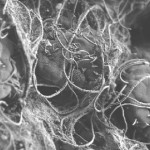Most clinically useful antibiotics exhibit their selective toxicity by specifically blocking one or another type of bacterial macromolecular synthesis (e.g.protein, nucleic acid or cell wall synthesis) — acting on targets that are not present or accessible in animal/human cells. Since the 1940s, when drugs such as penicillin, streptomycin, and chloramphenicol were introduced widely as “miraculous” agents for treating bacterial infections, the emergence of strains resistant to these and subsequently-developed drugs has represented a continuing clinical challenge. The eventual appearance of strains simultaneously resistant to multiple antibiotics significantly worsened the problem. The latter was found to involve different resistance genes linked to each other on segments of DNA able to move efficiently from one bacterial cell to another by phenomena known as horizontal gene transfer (HGT).
Prof Don Clewell presents a useful summary on the mode of action used by an antibiotic to effect an eradication of a pathogen and the developing problem of antibiotic resistance. A useful piece to support the reduction in antibiotic prescriptions. Found on SciTopics.





